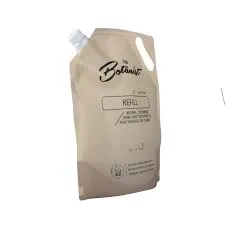Issues with Poor Packaging and Its Impact on Consumer Experience
The Impacts of Bad Packaging on Consumer Experience and Environment
In today’s fast-paced consumer-driven society, packaging plays a pivotal role in how products are perceived and valued. While the aesthetics of a product's exterior can attract buyers, poor packaging can have detrimental effects not only on consumer experience but also on the environment. Bad packaging can stem from design flaws, material choices, and inadequate protection, ultimately leading to a range of negative consequences.
Implications for Consumer Experience
When consumers purchase a product, they often have certain expectations regarding its packaging. Good packaging not only protects the product but also communicates information about the brand, enhances usability, and provides a sense of security. Conversely, bad packaging can frustrate consumers, leading to dissatisfaction and a loss of trust in the brand.
One common issue with bad packaging is the lack of protection
. Fragile items, such as glass or electronic devices, require robust packaging to prevent damage during transit. When companies opt for flimsy materials to cut costs, they increase the likelihood of products arriving broken or damaged. This not only disappoints customers but also results in a financial loss for the company due to refunds and returns.Additionally, poor packaging can complicate the user experience. For instance, overly complex packaging that is difficult to open can leave consumers feeling annoyed at the very start of their product experience. A good example of this is overly sealed food packages that often require tools or excessive force to open, leading to frustration and sometimes even injury. If the packaging fails to serve its primary purpose, it can diminish the overall appeal of the product, regardless of its quality.
Environmental Considerations
Beyond the immediate effects on consumer satisfaction, bad packaging also raises significant environmental concerns. The rush for inexpensive packaging materials often leads to choices that are not environmentally friendly. Many companies still rely on plastic packaging, which is not only detrimental to the environment but also increasingly criticized by consumers.
bad packaging

Plastic waste is one of the most pressing issues facing our planet. Poor packaging choices contribute significantly to this problem, as it often ends up in landfills, oceans, and natural habitats, harming wildlife and ecosystems. In contrast, companies that focus on sustainable packaging solutions can enhance their brand image and appeal to environmentally conscious consumers. This means using biodegradable materials, reducing excess packaging, and ensuring products are secure without relying on harmful substances.
Industry Responsiveness and Change
Fortunately, the dialogue around packaging has been evolving. Many companies are beginning to recognize the importance of good packaging design and the environmental impact of poor choices. Brands are increasingly investing in research and development to create innovative packaging solutions that are both functional and sustainable.
For instance, some companies have implemented a ‘minimalist’ approach, reducing the materials used without compromising quality. Others are exploring biodegradable or recyclable options that minimize environmental footprint. Moreover, some brands are turning to refundable packaging systems, encouraging consumers to return packaging for reuse, thus promoting a circular economy.
Conclusion
In summary, the implications of bad packaging extend far beyond mere aesthetics and functionality. It affects consumer satisfaction, brand trust, and the environment. As consumers become more discerning and environmentally conscious, companies must prioritize packaging that not only protects their products but also enhances the user experience and promotes sustainability.
The responsibility lies with both consumers and manufacturers. While consumers can advocate for better packaging choices by purchasing from brands that prioritize sustainability, companies must remain committed to innovation and ethical practices. The future of packaging is not just about convenience and cost-effectiveness; it’s about making choices that contribute positively to society and the planet. Adopting good packaging practices is crucial for building lasting relationships with consumers and fostering a healthier environment for future generations.













